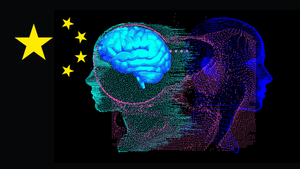A Chinese judge has commented on a decision made by a court in China last year that an artwork created using generative AI should enjoy copyright protection. The work in question was created using Stability AI's text-to-image tool Stable Diffusion.
According to the South China Morning Post, judge Zhu Ge said during a lecture last week that the ruling aimed to encourage people to use AI tools as part of the creative process, adding that if no AI-generated works are granted copyright protection, "this would deal a blow to the industry”.
While there has been much public debate about the copyright obligations of AI companies, another question posed by generative AI is whether or not content generated by such technologies should enjoy copyright protection.
A small number of copyright systems do provide protection for AI-generated works. UK copyright law includes default ownership rules for "computer-generated works", suggesting that those works are protected, although some have debated whether AI-generated content would meet the necessary originality requirements.
However, most copyright systems don't currently protect AI-generated works, and many people argue that that is the right approach, because copyright is meant to encourage and protect human creativity.
In the US, where works need to be registered to get full protection under copyright law, the US Copyright Office has declined to register entirely AI-generated content. However, it has said that AI-assisted works - where human creators use AI tools as part of their creative process - probably can be registered.
Which then poses the question of how much human involvement there needs to be for a work to be AI-assisted rather than AI-generated. When launching its consultation on AI last year, the Copyright Office stated: “Although we believe the law is clear that copyright protection in the United States is limited to works of human authorship, questions remain about where and how to draw the line between human creation and AI-generated content”.
In the case in China, the process the creator of the AI-generated image had gone through was considered. He had provided numerous prompts and repeatedly adjusted the parameters in order to generate a picture which reflected his “aesthetic choice and personalised judgement”. It may be that had the image come from a single short prompt, the court would not have granted copyright protection.
The copyright status of the image was considered by the Beijing Internet Court after the creator sued a blogger who published it without permission. While in her ruling Zhu Ge said the copyright status of AI-generated works should be judged on a case-by-case basis, in her lecture she added that she hoped her ruling last year could serve as a reference in future disputes.

